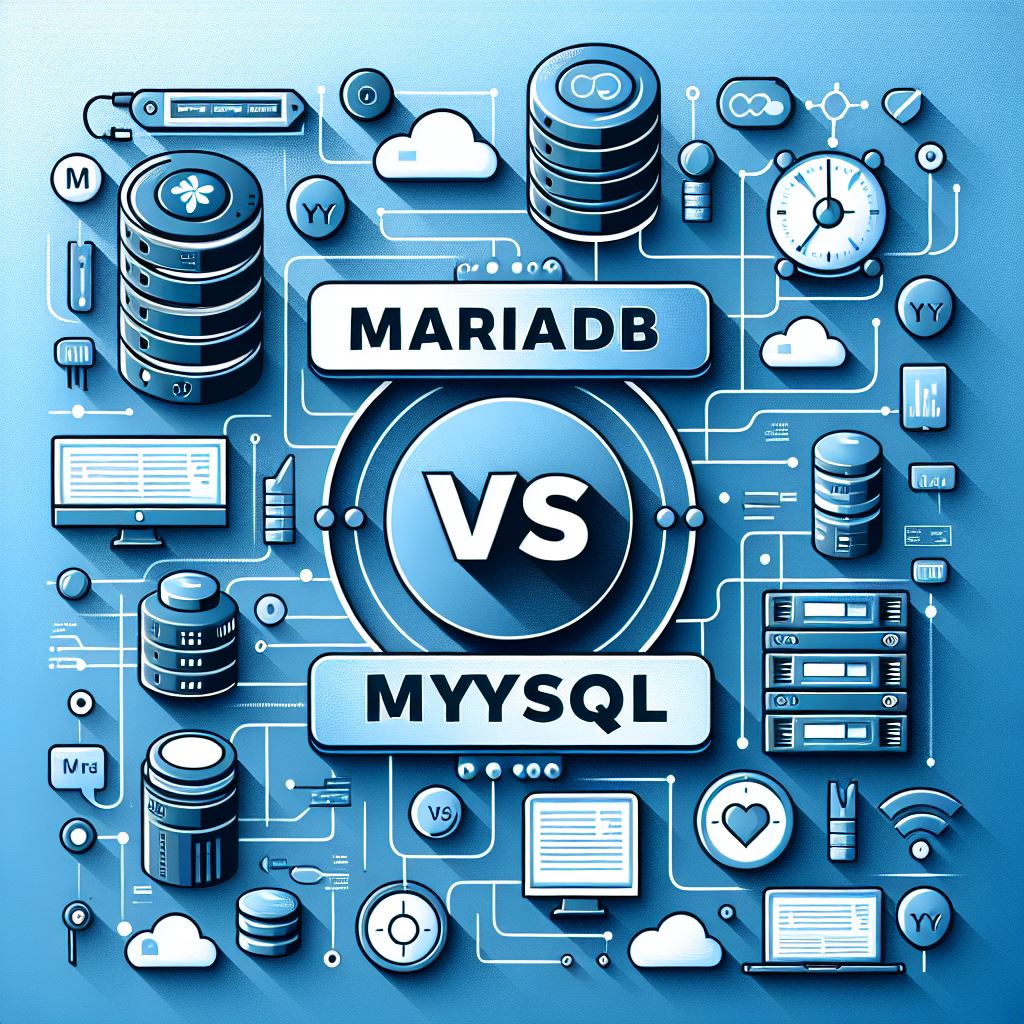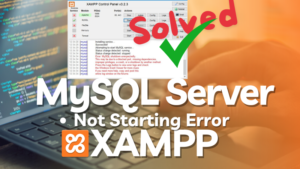
MariaDB vs MySQL - Which Database is Right for Your Project in 2024
Outline:
- Introduction Overview of Database Management Systems
- What is MySQL? History and Development of MySQL
- What is MariaDB? Why MariaDB was Created
- MySQL and MariaDB: Key Differences Open Source Licensing
- Performance Comparison Query Optimization
- Security Differences Authentication Mechanisms
- Data Types and Indexes Supported Data Types
- SQL Syntax and Compatibility Compatibility with SQL Standards
- Replication and Clustering Replication Methods
- Storage Engines Common Storage Engines for Both
- Performance and Speed Query Execution Speed
- Cost and Licensing Commercial Support for MySQL
- Community and Ecosystem Developer and Community Involvement
- Use Cases Ideal Use Cases for MySQL
- Migration Process Tools and Techniques for Migration
- Future of MySQL and MariaDB Development Roadmaps
- Conclusion Summary of Differences and Recommendations
MariaDB vs MySQL: A Comprehensive Comparison
Introduction
Database management systems (DBMS) are essential for storing and managing data for websites, applications, and other digital platforms. Among the most popular relational database management systems are MySQL and MariaDB, both renowned for their speed, reliability, and flexibility. In this article, we’ll dive into the specifics of each, compare their features, and help you determine which might be the best choice for your project.
What is MySQL?
MySQL, developed in 1995, quickly gained popularity for its ease of use, scalability, and broad adoption. Today, it is known for providing robust database management capabilities suitable for applications ranging from personal projects to large-scale enterprise environments.
Key Features of MySQL
- High-Performance Scalability: MySQL supports large-scale databases, making it popular for enterprise applications.
- Comprehensive Security Features: Advanced authentication and encryption ensure data security.
- Extensive Documentation and Community Support: Backed by a large community, MySQL has plenty of resources available for developers.
What is MariaDB?
MariaDB was created as a fork of MySQL by the original developers in response to concerns about Oracle Corporation’s acquisition of MySQL. MariaDB aims to stay completely open source, preserving MySQL’s original intent while adding unique features and optimizations.
Key Features of MariaDB
- Improved Performance: MariaDB integrates optimizations that enhance speed and efficiency.
- Expanded Storage Engines: Offers more storage engines than MySQL, providing flexibility.
- Active Community Support: MariaDB Foundation ensures ongoing development and innovation.
MySQL and MariaDB: Key Differences
Though they share a common codebase, MariaDB and MySQL have diverged significantly. Understanding their differences can help in choosing the right database for specific needs.
Open Source Licensing
While MySQL is available in both open-source and enterprise versions, some features require a paid license under Oracle. MariaDB, on the other hand, remains entirely open source, ensuring that all its features are freely accessible.
Community and Development Support
MariaDB’s community-driven development ensures continuous updates and feature additions. MySQL’s updates are largely influenced by Oracle, which sometimes delays or restricts access to certain features in the open-source version.
Performance Comparison
Performance is a critical consideration for any database management system. Here’s how MariaDB and MySQL measure up.
Query Optimization
MariaDB offers advanced query optimization features, making it generally faster than MySQL for certain types of queries, especially in complex environments.
Storage Engine Support
MariaDB provides support for more storage engines, including Aria and ColumnStore, expanding its use cases in analytical applications. MySQL is known for stability but lacks some of the flexibility in storage engine options available in MariaDB.
Security Differences
Both MySQL and MariaDB are secure, but there are differences in their approach to security.
Authentication Mechanisms
MariaDB has an advanced authentication system, supporting multiple authentication plugins, which can be advantageous for organizations with complex security needs.
Encryption Capabilities
MySQL and MariaDB both support encryption at various levels; however, MariaDB offers easier-to-implement encryption options, making it a preferred choice for users focused on data security.
Data Types and Indexes
Data handling capabilities such as supported data types and indexing options can influence the choice between MySQL and MariaDB.
Supported Data Types
While both support a wide range of data types, MariaDB has introduced additional types, like JSON and other complex data types, improving its suitability for modern applications.
Indexing Capabilities
MariaDB supports dynamic columns, which adds flexibility and enables more efficient indexing options compared to MySQL.
SQL Syntax and Compatibility
For developers who need cross-compatibility between databases, understanding syntax differences is crucial.
Compatibility with SQL Standards
MariaDB aligns more closely with SQL standards than MySQL, ensuring that its syntax is highly compatible with other SQL-based systems.
Syntax Variations Between MariaDB and MySQL
While they’re mostly compatible, some MariaDB SQL functions differ slightly from MySQL’s, potentially requiring adjustments during migration.
Replication and Clustering
Both MySQL and MariaDB support replication, but with notable differences in clustering options.
Replication Methods
MariaDB and MySQL both offer master-slave replication; however, MariaDB provides additional replication methods, like Galera Cluster, which is not natively supported in MySQL.
Cluster Configurations and Support
MariaDB’s Galera Cluster offers synchronous replication, which can be advantageous for high-availability applications. MySQL’s clustering options, while stable, are generally more limited.
Storage Engines
MariaDB and MySQL offer different storage engines, which can influence performance and functionality based on the application’s requirements.
Common Storage Engines for Both
Both MariaDB and MySQL support popular storage engines like InnoDB (optimized for transactional applications) and MyISAM (optimized for read-heavy applications). These engines are commonly used and stable, making them reliable choices for general-purpose databases.
Unique Storage Engines in MariaDB
MariaDB provides additional storage engines that are unique to its system, including:
- Aria: A crash-safe alternative to MyISAM, ideal for complex queries and temporary data storage.
- ColumnStore: Optimized for data warehousing and analytics, this engine is highly efficient in handling large-scale data processing.
- S3: Enables cloud storage integration, making it easier for users to manage large datasets stored on cloud platforms.
These unique engines make MariaDB a strong choice for applications requiring specialized data handling or those relying on analytical processing.
Performance and Speed
Performance varies between MariaDB and MySQL based on query complexity, hardware, and database configuration.
Query Execution Speed
MariaDB typically demonstrates faster query execution speeds due to enhanced optimizations in its query processing. Users managing large or complex queries may find that MariaDB handles these more efficiently than MySQL.
Caching Mechanisms
Both MySQL and MariaDB support caching mechanisms to boost performance. MariaDB’s caching layer is often more customizable, which can improve retrieval times and reduce server load in high-traffic environments.
Cost and Licensing
The licensing models of MariaDB and MySQL can be a deciding factor, especially for enterprises balancing budget constraints with performance needs.
Commercial Support for MySQL
While MySQL offers a free community edition, Oracle’s commercial version includes additional features and customer support for businesses willing to invest in a premium service. This version often appeals to large enterprises requiring advanced features, support, and regulatory compliance.
MariaDB’s Open Source Commitment
MariaDB remains fully open source, meaning all of its features are available to users at no cost. MariaDB’s open-source philosophy appeals to businesses and individuals looking for a robust database solution without the commitment of licensing fees.
Community and Ecosystem
The community behind a database technology often influences its development pace, support options, and ecosystem growth.
Developer and Community Involvement
MariaDB’s community-driven approach promotes transparency and frequent updates. It encourages developers to contribute, which accelerates the release of new features and security patches. MySQL’s community is also active, but Oracle’s influence occasionally limits the open development of some advanced features.
Open Source Contributions
MariaDB’s open-source ecosystem benefits from contributions by developers worldwide. This global support enhances MariaDB’s flexibility, as the community contributes to bug fixes, plugins, and new functionalities.
Use Cases
Choosing between MariaDB and MySQL often depends on the specific application and use case.
Ideal Use Cases for MySQL
MySQL is widely used for:
- Web Applications: Many web applications, such as WordPress and Magento, are optimized for MySQL.
- Transactional Systems: MySQL’s stability makes it a reliable choice for handling transactions, such as those in e-commerce and banking systems.
- Enterprise Applications: MySQL Enterprise Edition offers features like advanced monitoring, making it suitable for large-scale enterprise applications requiring additional support and reliability.
Ideal Use Cases for MariaDB
MariaDB’s flexible and feature-rich environment makes it ideal for:
- Data Warehousing: MariaDB’s ColumnStore engine is excellent for analytical processing and data warehousing.
- Cloud and Hybrid Environments: With its S3 storage engine, MariaDB can handle hybrid environments that rely on cloud storage.
- Open-Source Applications: MariaDB is a preferred choice for developers wanting a fully open-source solution without the constraints of licensing.
Migration Process
Switching between MySQL and MariaDB is generally straightforward, but there are essential considerations and steps to ensure a smooth migration.
Tools and Techniques for Migration
Popular migration tools include mysqldump and MariaDB’s migration utilities. Many users find that migrating from MySQL to MariaDB is relatively seamless since MariaDB is designed to maintain compatibility with MySQL.
Challenges in Migrating from MySQL to MariaDB
Potential challenges may include:
- Syntax Differences: Although MariaDB is compatible with MySQL, some SQL syntax variations require testing and adjustments.
- Storage Engine Differences: Unique engines in MariaDB might necessitate adaptations if using features not supported by MySQL.
Future of MySQL and MariaDB
Both MySQL and MariaDB have promising futures, supported by strong communities and robust development roadmaps.
Development Roadmaps
MySQL, backed by Oracle, focuses on enterprise applications and security improvements. MariaDB, governed by the MariaDB Foundation, emphasizes open-source development, transparency, and performance optimizations, which are likely to drive its future features.
Predicted Trends in Database Management
Trends indicate that databases will increasingly focus on cloud integration, data warehousing, and performance optimization. MariaDB’s innovations in storage engines and MySQL’s enterprise-grade features suggest that both will remain relevant.
Conclusion
Choosing between MariaDB and MySQL depends on project needs, community support, licensing preferences, and specific use cases. While MySQL remains a popular choice for traditional applications, MariaDB’s continuous development and unique features make it an excellent choice for users seeking flexibility, performance, and a completely open-source platform.
Frequently Asked Questions (FAQs)
- What are the main differences between MariaDB and MySQL?
- MariaDB is fully open source with enhanced storage engine options, while MySQL offers both open-source and enterprise editions with proprietary features from Oracle.
- Is MariaDB faster than MySQL?
- Yes, MariaDB generally offers faster performance for complex queries due to optimizations in its query processing engine.
- Can I use MySQL and MariaDB interchangeably?
- While MariaDB and MySQL are compatible to a large extent, some differences in storage engines and syntax may require adjustments when switching between them.
- Is MariaDB free to use?
- MariaDB is entirely open source and free, whereas MySQL has a paid enterprise version that includes additional features.
- Which database should I choose for web applications?
- MySQL is often a better choice for web applications because of its stability and compatibility with popular CMS platforms, while MariaDB is ideal for applications needing advanced data processing.
- Can MariaDB run on cloud platforms?
- Yes, MariaDB’s S3 storage engine allows it to run seamlessly with cloud storage solutions, making it suitable for hybrid environments.



